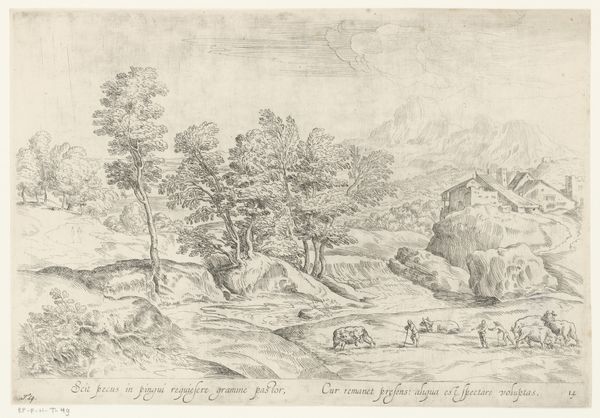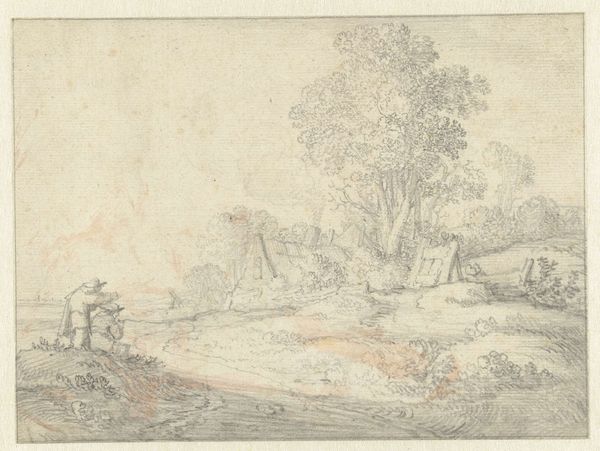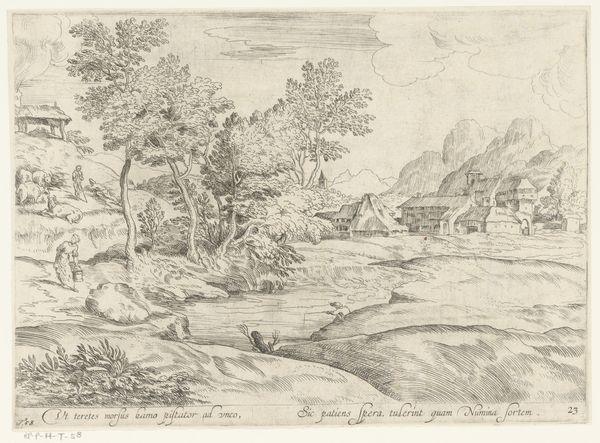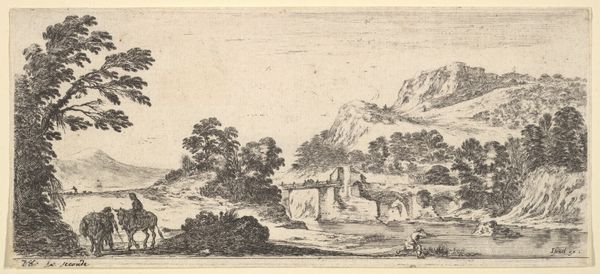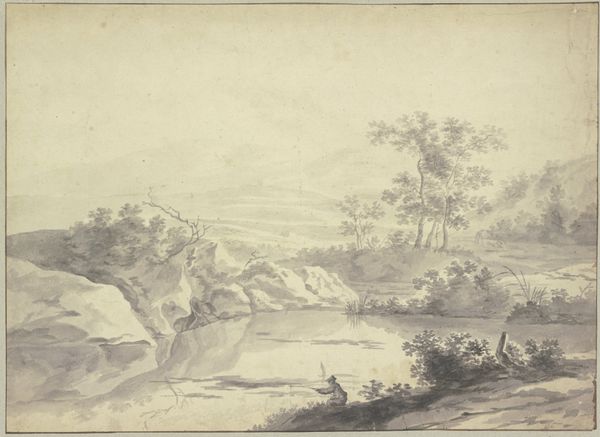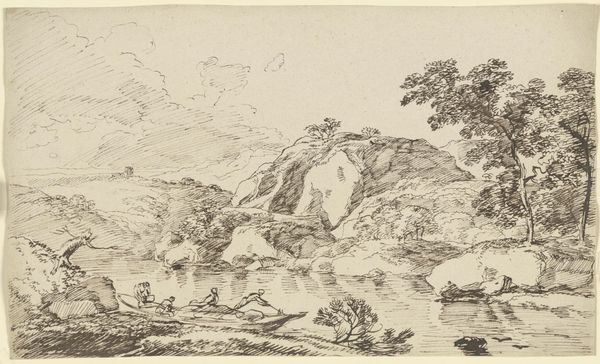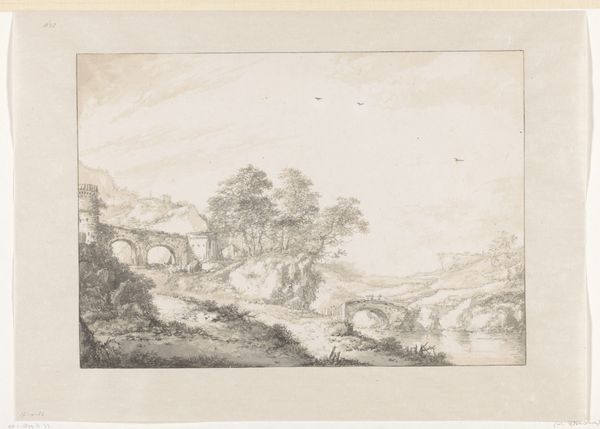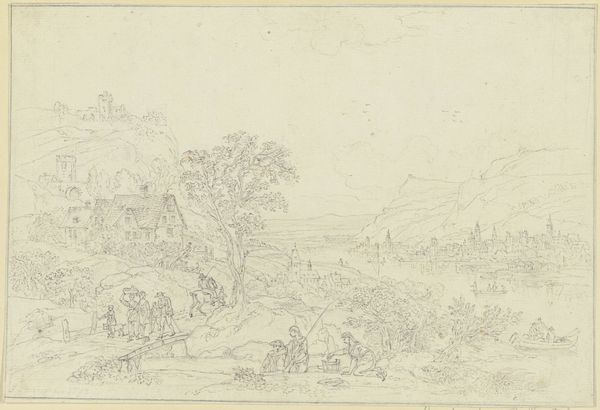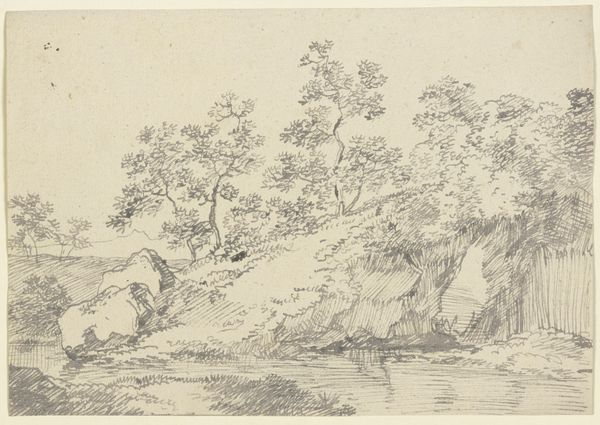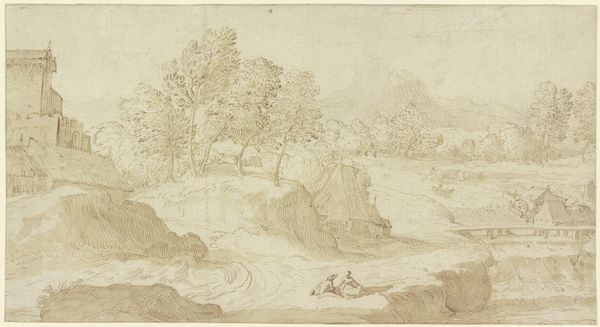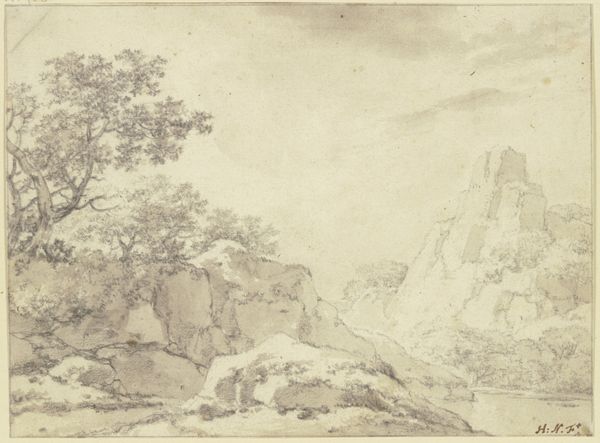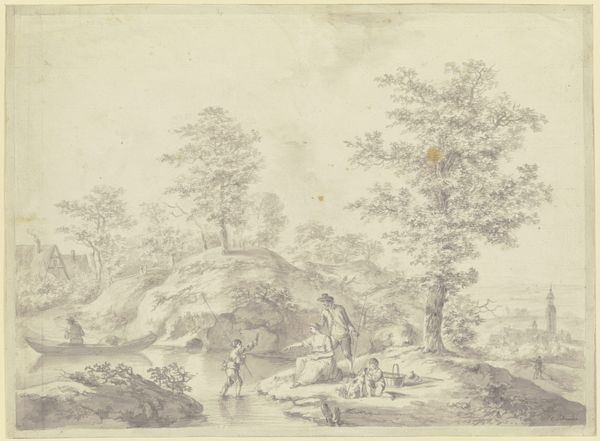
drawing, print, etching, pen
#
drawing
#
baroque
# print
#
etching
#
landscape
#
figuration
#
pen
Dimensions: height 267 mm, width 245 mm
Copyright: Rijks Museum: Open Domain
Curator: So, we're looking at "Landschap met zwemmers bij een kleine waterval"—"Landscape with Swimmers near a Small Waterfall"—a piece attributed to Jean Pesne, dating from sometime between 1666 and 1695. It's a combination of etching, drawing, and print. Editor: My first impression is...inviting. A scene both bucolic and somehow theatrical, staged. The whole image seems filtered through a very precise lens. It feels very controlled. Curator: Controlled, yes, and that's typical of Baroque landscapes. They're not just records of nature, but constructed visions, statements of power and order imposed upon the natural world. Think of Versailles. This isn't just a casual snapshot. Editor: Versailles comes to mind. So that building near the water is there to suggest that same idea? It feels a little incongruous... Curator: Precisely! It's both functional, perhaps part of an aqueduct, and a symbolic structure claiming dominance of civilization. Consider how it frames and organizes our gaze in this landscape. A celebration of human engineering over, well, swimming holes. Editor: I was drawn to those figures by the waterfall first—but then, the swimmers down below felt completely separate in feeling... more... earthy? Curator: It does add a curious juxtaposition. The swimmers seem almost incidental, like footnotes to the grander architectural and landscaping statement being made. They highlight the public versus private experience of water. While the 'higher' people remain separate. Editor: There is an element of tension created through the piece: artifice vs. reality, human engineering versus nature, observation over immersion. It feels almost like a statement about control itself. What do you find most evocative about this print, from a historical perspective? Curator: I find its reflection of a society grappling with its relationship to the natural world to be deeply evocative—both idealizing and mastering it. The landscape becomes a stage for showcasing that power dynamic, playing out in these small human dramas. It tells us a great deal about class and aspiration during the period it was created. Editor: It definitely prompts thought far beyond what it depicts, something timeless in its art. It is indeed interesting how many aspects can derive from something as seemingly plain and simple as a picture.
Comments
No comments
Be the first to comment and join the conversation on the ultimate creative platform.
